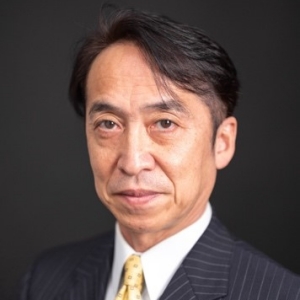ICCRE 2024 Keynote Speakers
Prof. Hong Zhang
Southern University of Science and Technology (SUSTech), China
Fellow of IEEE | Fellow of the Canadian Academy of Engineering

Biography: Dr. ZHANG Hong is currently a Chair Professor in the Department of Electronic and Electrical Engineering at Southern University of Science and Technology (SUSTech), China. Prior to joining SUSTech, he was a Professor in the Department of Computing Science, University of Alberta, Canada where he worked for over 30 years. Dr. Zhang's research interests include robotics, computer vision, and image processing, and he has made significant contributions in these areas. Among his services in the international robotics community, he served as the Editor-in-Chief of IROS Conference Paper Review Board, a flagship conference of the IEEE Robotics and Automation Society, from 2020 to 2022. Currently, he is serving a three-year term on the Administrative Committee (AdCom) of the IEEE Robotics and Automation Society, from 2023 to 2025. In recognition of his many contributions, Dr. Zhang was elected a Fellow of IEEE and a Fellow of the Canadian Academy of Engineering.
Title of Speech:
Generalizable Task-Oriented Grasping with Foundation Models
Abstract: Task-oriented grasping (TOG) refers to the problem of synthesizing grasps on an object that are configurationally compatible with the downstream manipulation task. Solution to TOG requires the semantic and geometric knowledge about objects, tasks, and grasps. Existing methods typically limit such knowledge to that in a closed-set of known objects and tasks of a training dataset, and are therefore unable to generalize to novel objects and tasks outside the dataset. In this talk, we will present our recent work on grasp synthesis beyond a closed-set of training objects and tasks. The key idea of our solution is to leverage the open-ended knowledge in foundation models - specifically large language models (GPT and BERT) and visual language models (CLIP) – for the required knowledge about novel objects and tasks. Comprehensive experiments both in simulation and on a real robot arm are conducted to demonstrate the superiority of our solution over existing methods.
Prof. Shugen Ma
The Hong Kong University of Science and Technology (Guangzhou), China
Professor Emeritus of Ritsumeikan University, Japan
Fellow of IEEE, AAIA, JSME

Biography: Shugen Ma (Foreign Fellow of the EAJ, IEEE Fellow, AAIA Fellow, JSME Fellow) received his Ph.D. in Mechanical Engineering Science from the Tokyo Institute of Technology in 1991. From 1991 to 1992, he was a Research Engineer with Komatsu Ltd, and from 1992 to 1993, he was a Visiting Scholar at the University of California, Riverside. He joined the Department of Systems Engineering at Ibaraki University as an Assistant Professor in 1993 and then moved to Ritsumeikan University as a Professor in 2005. In 2023, he joined the Robotics and Autonomous Systems Thrust of Systems Hub as a Professor at the Hong Kong University of Science and Technology (Guangzhou). His research interests include the design and control of environment-adaptive robots, field robotics, and Bio-robotics. He has published over 530 papers in refereed professional journals and international conference proceedings. He has also developed over 50 novel robot systems, filed over 80 patents, and supervised 44 Ph.D. students and over 100 M.Phil. students to graduation. For this achievement, he has been featured in the list of the world’s top 2% of scientists published by Stanford University.
He is the general chair of IROS2022 in Kyoto, founded the ROBIO conference in 2004, and served as the general chair of ROBIO 2004, ROBIO 2010, and ROBIO 2016. He was/is an Associate Editor of the IEEE Transaction on Robotics from December 2003 to November 2007, an Editor of Advanced Robotics, and an Associate Editor of Biomimetic Intelligence and Robotics, serving many societies and conferences.
Title of Speech:
Wall Climbing-Supported Devices: Saving people from dangerous tasks
Abstract: Work on building walls is accompanied by dangers and risks. The safety in those works could be improved by attaching workers or gondolas onto the wall surface. A suction cup with negative pressure is a commonly considered method, where a pump keeps the negative pressure of the cup. Using an air pump keeps the inner negative pressure at a necessary value, makes the device large and heavy, and generates high noise. In this talk, I will introduce a suction cup design whose negative pressure is kept by a passive mechanism. The elastic energy of a suspended spring is utilized to compensate for the air inflow that decreases the inner negative pressure. The experimental verification demonstrated that the negative pressure of the proposed spring-suspended suction cup can be kept for a longer time than that of a common cam-suspended suction cup. Furthermore, I will take this opportunity to present an innovative wall-climbing robot design for wall applications, where passive suction cups generate the necessary suction force.
Prof. Makoto Iwasaki
Nagoya Institute of Technology, Japan
IEEE Fellow, IEE Japan Fellow

Biography: Makoto Iwasaki received the B.S., M.S., and Dr. Eng. degrees in electrical and computer engineering from Nagoya Institute of Technology, Nagoya, Japan, in 1986, 1988, and 1991, respectively. He is currently a Professor at the Department of Electrical and Mechanical Engineering, Nagoya Institute of Technology.
As professional contributions of the IEEE, he has participated in various organizing services, such as, a Co-Editors-in-Chief for IEEE Transactions on Industrial Electronics from 2016 to 2022, a Vice President for Planning and Development in term of 2018 to 2021, etc. He is IEEE fellow class 2015 for "contributions to fast and precise positioning in motion controller design".
He has received many academic, foundation, and government awards, like the Best Paper and Technical Awards of IEE Japan, the Nagamori Award, the Ichimura Prize, and the Commendation for Science and Technology by the Japanese Minister of Education, respectively. He is also a fellow of IEE Japan, and a member of Science Council of Japan.
His current research interests are the applications of control theories to linear/nonlinear modeling and precision positioning, through various collaborative research activities with industries.
Title of Speech:
GA-Based Optimization in Mechatronic Systems: System Identification and Controller Design
Abstract: Fast-response and high-precision motion control is one of indispensable techniques in a wide variety of high performance mechatronic systems including micro and/or nano scale motion, such as data storage devices, machine tools, manufacturing tools for electronics components, and industrial robots, from the standpoints of high productivity, high quality of products, and total cost reduction. In those applications, the required specifications in the motion performance, e.g. response/settling time, trajectory/settling accuracy, etc., should be sufficiently achieved. In addition, the robustness against disturbances and/or uncertainties, the mechanical vibration suppression, and the adaptation capability against variations in mechanisms should be essential properties to be provided in the performance.
The keynote speech presents practical optimization techniques based on a genetic algorithm (GA) for mechatronic systems, especially focusing on auto-tuning approaches in system identification and motion controller design. Comparing to conventional manual tuning techniques, the auto-tuning technique can save the time and cost of controller tuning by skilled engineers, can reduce performance deviation among products, and can achieve higher control performance. The technique consists of two main processes: one is an autonomous system identification process, involving in the use of actual motion profiles of system. The other is, on the other hand, an autonomous control gain tuning process in the frequency and time domains, involving in the use of GA, which satisfies the required tuning control specifications, e.g., control performance, execution time, stability, and practical applicability in industries. The proposed technique has been practically evaluated through experiments performed, by giving examples in industrial applications to a galvano scanner in laser drilling manufacturing and an actual six-axis industrial robot.

